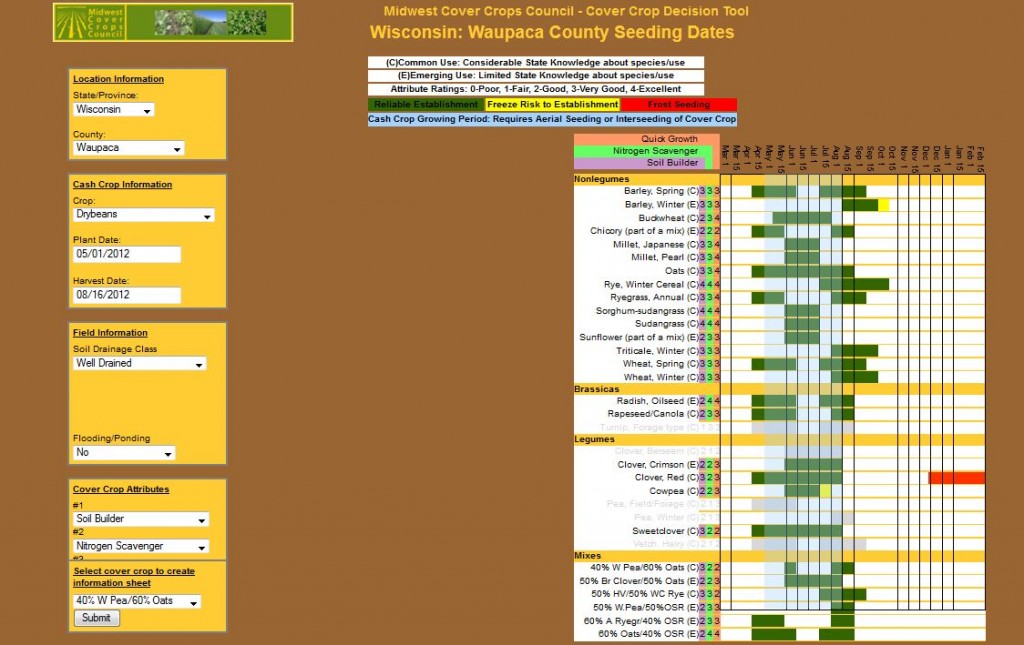Folks,
I feel like a proud papa! Well sort of – maybe a proud brother. Several people from Ohio, Indiana, and Michigan have worked countless hours to provide a Cover Crop Decision Making Tool. I was privileged to be a part of the Indiana and Ohio teams. This tool will guide producers in making wise decisions on what cover crops can be used on their operation and when they should be planted.
Below is some information about the Midwest Cover Crops Council taken from their site.
About the MCCC
The Cover Crop Decision Tool is a project of the MCCC. The MCCC is a diverse group from academia, production agriculture, non-governmental organizations, commodity interests, private sector, and representatives from federal and state agencies. The MCCC collaborates to promote the use of cover crops to address soil, water, air, and agricultural quality concerns in the Great Lakes and Mississippi river basins. MCCC member states/provinces include Indiana, Michigan, Ohio, Manitoba, Ontario, Illinois, Wisconsin, Minnesota, Iowa, and North Dakota. Learn more about the MCCC at http://www.mccc.msu.edu.
The following is some information (also taken from their site) about the cover crop tool itself:
About the Cover Crop Decision Tool
The Cover Crop Decision Tool is an initiative by the MCCC to consolidate cover crop
information by state to help farmers make cover crop selections at the county level.
Information for each state/province is developed by a team of cover crop experts including
university researchers, Extension educators, NRCS personnel, agriculture department
personnel, crop advisors, seed suppliers and farmers. The team reviewed and refined
information from the Sustainable Agriculture Research and Education (SARE)
(http://www.sare.org) publication Managing Cover Crops Profitably, 3rd edition http://www.sare.org/publications/covercrops/covercrops.pdf) to refine application within their state/province. The information and ratings contained in the Cover Crop Decision Tool is the team consensus based on literature, research results, on-farm experience and practical knowledge.

We do double crop beans behind wheat-for years I have been thinking of why I leave standing stubble-would it not be better to somehow get the stubble on the ground and use it like mulch-question is how do I do it-any comments
Darryl, I suppose a chopper, bush-hog, or mower would each work to accomplish getting the stubble on the ground. Have you just been leaving the double crop beans as a cover crop or are you trying to harvest the beans in some years? If it is only for cover crop purposes you may find an economic advantage to planting Austrian Winter Peas or even Canadian Field Peas. I believe you will find that they cost less per acre since soybean seed is quite expensive these days. Just a thought! I know that most folks leave their peas standing going into the winter and that they decay well over the winter. The N is not all readily available but it sure benefits the next corn crop.